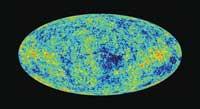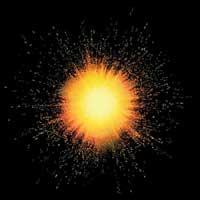The background radiation of the universe, increasingly accurate
The explosion of the Big Bang and the process of creating the universe are very difficult to investigate, since we must start from the traces that occurred. When did the stars emerge? How was the matter dispersed? How many years does the universe have?

An opportunity to investigate all this is that the events that triggered the universe caused the appearance of electromagnetic radiation, which has been maintained to the present day. It is the only footprint of the available generation and these waves are called microwave background radiations.
NASA periodically publishes the results of its research. In recent years it has been common for the media to determine the age of the universe and topology (geometry). Today, for example. But what news does the news bring?
In part nothing. New data have been published, but the line of research is ancient and from a conceptual point of view nothing new has been added. In fact, the journal Science included the outcome of background radiation research in the list of the most important science achievements of the year 2002. And what is published now is just a detail of such research.
In order to hide or not the defeat of pitcher Columbia, NASA has offered a press conference to communicate new numbers about the universe. They have in progress a project that measures the background radiation of the microwave with greater precision than in the previous ones, and that has measured the radiation of "all the sky", and the polarity of said radiation.

From there, they again calculate the age of the universe. Last year it was declared between 12,000 and 15,000 million years, and the data was being discussed. Now they have given a more concrete number: 13.7 billion years. In addition, two other calculations have been published: background radiation and the first stars were formed at 400,000 and 200 million years, respectively, of the Big Bang. Long before what was thought until now.
What numbers will give us the next time they make more accurate calculations? Why do they present them to us?
Buletina
Bidali zure helbide elektronikoa eta jaso asteroko buletina zure sarrera-ontzian











